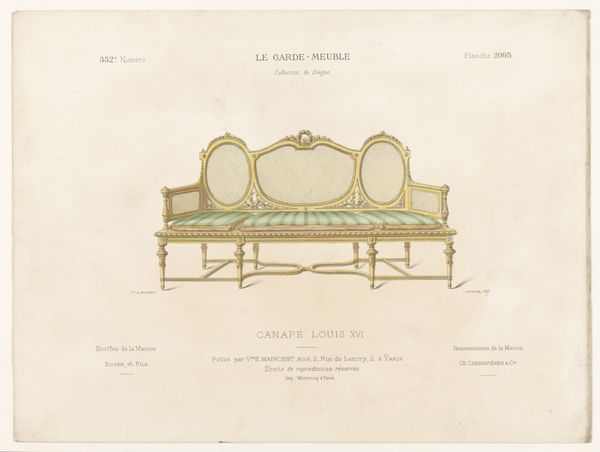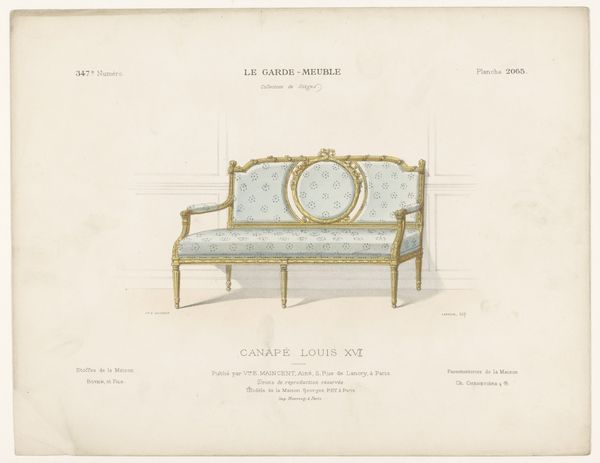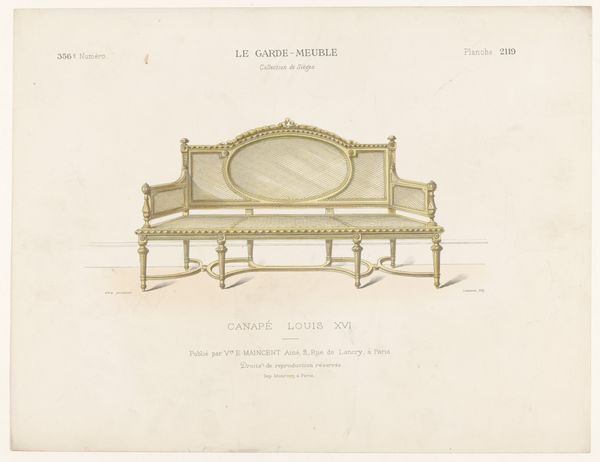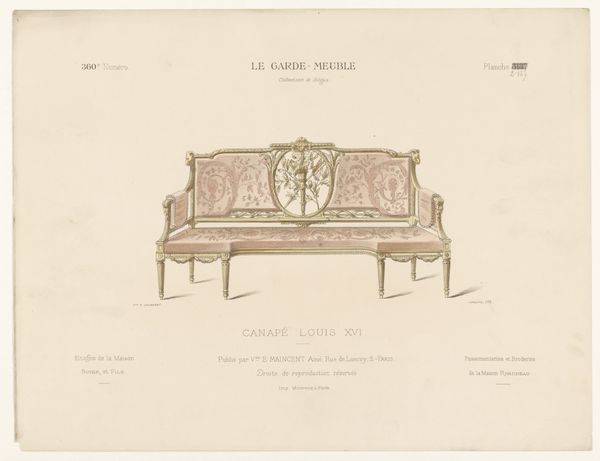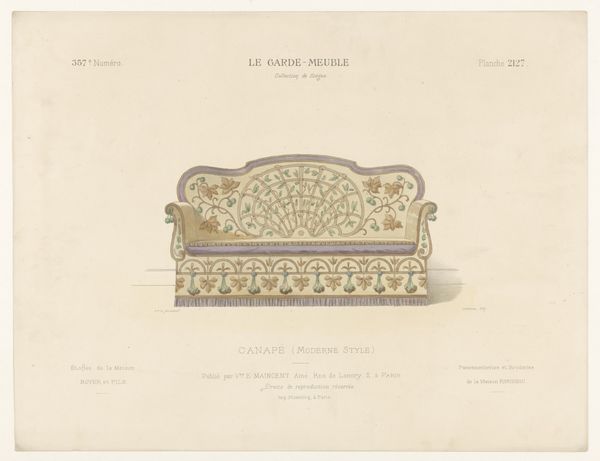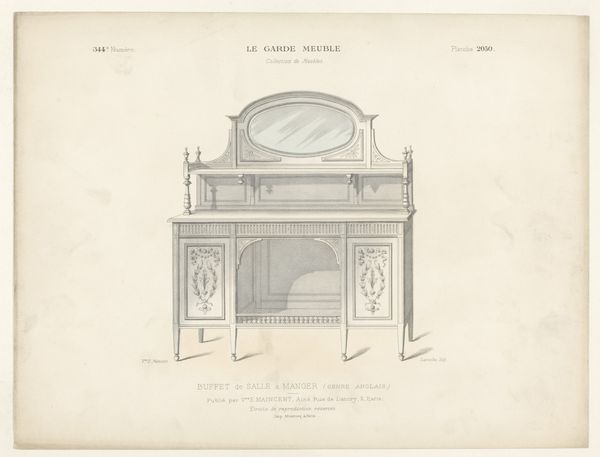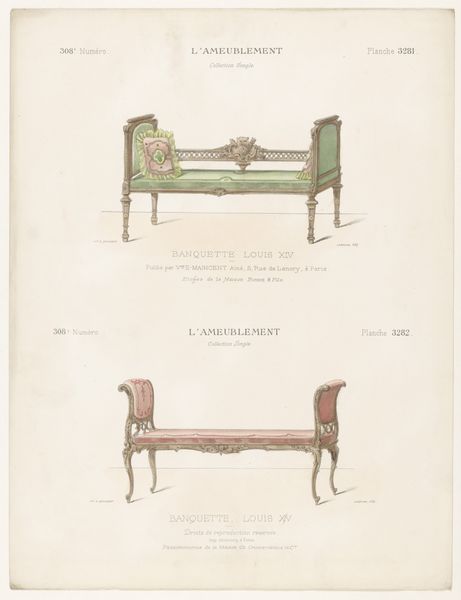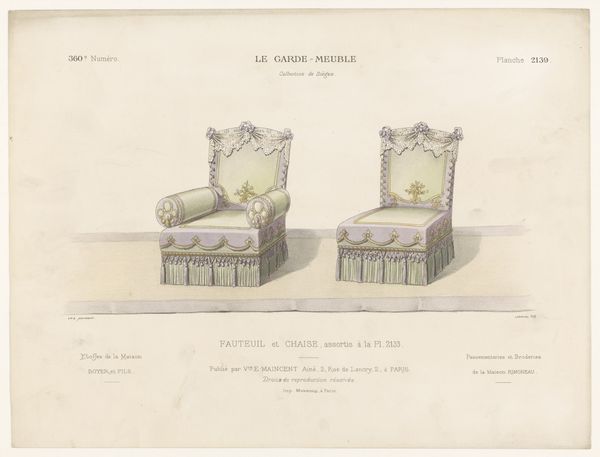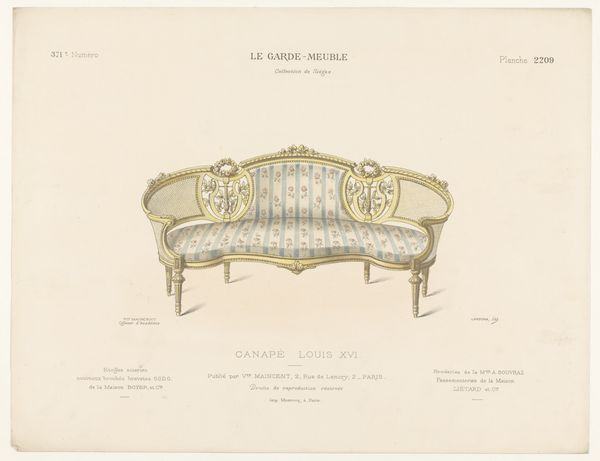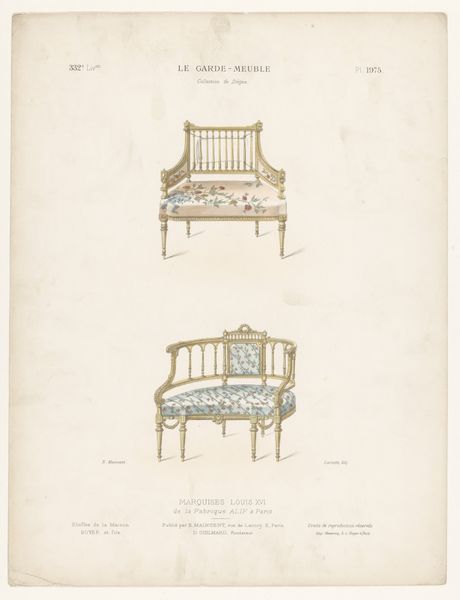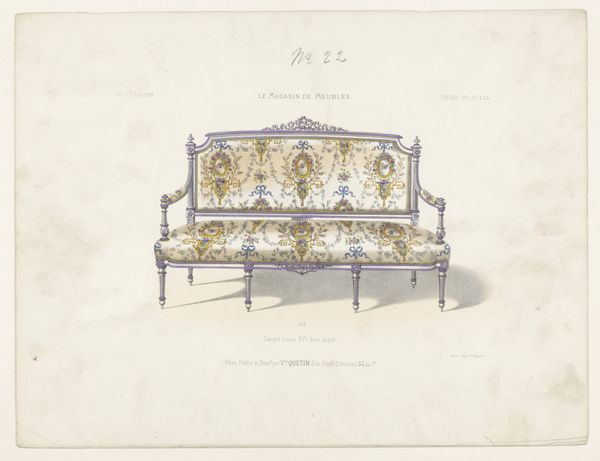
Dimensions: height 269 mm, width 356 mm
Copyright: Rijks Museum: Open Domain
Editor: This is "Canapé", a print made with ink and watercolour on paper by Léon Laroche, sometime between 1895 and 1935. It depicts a small Louis XVI sofa. I'm immediately drawn to how decorative and almost fragile it appears. What stands out to you? Curator: I see a study of production. Think about it: the image depicts a piece of furniture meant for domestic use, specifically, for *leisure*. But here, that leisure is deferred. It's represented as an *image*, meticulously crafted by Laroche through printing, ink, and watercolor. Editor: So you're saying the image itself becomes an object of labor? Curator: Precisely. Consider the socio-economic implications of this process. We’re not just looking at a pretty sofa. We’re witnessing the translation of material object into reproducible image and that transformation required resources and skills, from the ink and paper to the labor of the printer and artist. And who was the intended consumer of this image? Someone invested, directly or indirectly, in that system of production and consumption. This is "decorative-art", where does functionality fit within that decorative style? Editor: It is thought-provoking to consider the sofa not just as an object, but as a node in a network of material production, consumption, and representation. Curator: Exactly! Thinking about art from a materialist perspective urges us to look beyond aesthetic appeal and understand the forces that shape its creation, dissemination, and reception. Editor: This gives me a new appreciation for understanding a work’s process and its position in broader economic systems. Thank you.
Comments
No comments
Be the first to comment and join the conversation on the ultimate creative platform.
